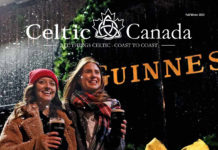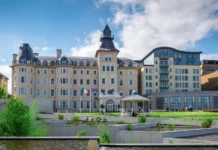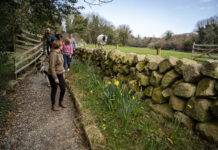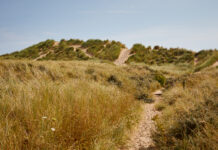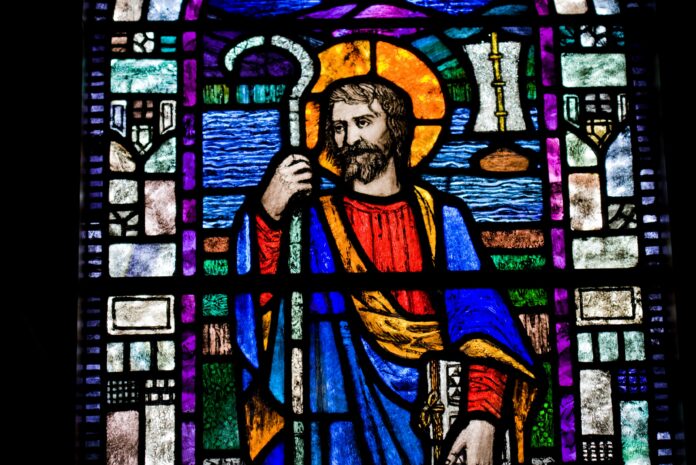Discover the man behind the legends by following in the footsteps of Ireland’s patron saint through Northern Ireland’s stunning landscape.
Ireland’s patron saint, Patrick, was actually born in Britain around AD 400 and came to Ireland as a slave when he was 16. After six gruelling years as a slave herdsman in the north of the island, he escaped and was reunited with his family. But according to his own writings, the Confessio, he heard the voice of the Irish calling him, so after being ordained as a bishop he returned to Ireland to spread the message of Christianity.

Patrick’s influence on the Irish people was profound and, to this day, pilgrims journey to visit the places associated with his life and teachings and hold to the stories associated with his ministry. These include Patrick using the shamrock to explain the holy Trinity and banishing all the snakes from Ireland (there weren’t any to begin with but in Ireland it’s all about a good story). He is also credited with creating the iconic Celtic cross by combining the symbol of the sun from pagan worship with the Christian cross.
St Patrick´s Way: The Pilgrims’ Walk
Stretching from Armagh, the ecclesiastical capital of Ireland, to Downpatrick, where Patrick is said to be buried, this 130km signed walking trail connects key sites relating to St Patrick and Christian heritage.
The trail begins at historic Navan Fort, the ancient seat of the kings of Ulster. Patrick is said to have healed a chieftain there who gave him a hill in Armagh on which to build his first church. This is now the site of one of the two cathedrals dedicated to St Patrick in the city of Armagh. To find out more about Armagh’s ecclesiastical history, take time to follow the ecclesiastical trail of the city.
The Pilgrims’ Walk passes through a variety of urban and rural landscapes including the beautiful Mourne Mountains, the Newry canal, the seaside town of Newcastle and the Murlough Bay Nature Reserve before arriving at Downpatrick. And for a break from walking, you can even canoe part of it.
At key places along the way you can gather stamps on your Pilgrim’s Passport as a souvenir of the camino experience. A fully stamped passport gets you a certificate of completion.
Downpatrick
The town most associated with the saint is home to The Saint Patrick Centre, the only permanent exhibition in the world about him. The hi-tech multimedia exhibition tells the story of his life and mission. There are also multiple excellent guided experiences on offer from the centre including short caminos that explore the Christian monuments and stunning landscape of County Down.
After a visit to the centre, it’s a short walk to medieval Down Cathedral to see the large stone slab that covers St Patrick’s grave. It’s also said to be the burial place of Ireland’s other two patron saints St Brigid and St Colmcille.
A few miles outside Downpatrick in the village of Saul is a small stone church built on what is said to be the earliest place that St Patrick led Christian worship in Ireland. The site is referred to as the Cradle of Christianity and was where Patrick lived in the years before his death. There is also an impressive replica of an early Christian round tower there.
Nearby on the crest of Slieve Patrick stands an imposing statue of the saint carved from local granite and adorned with bronze plaques depicting scenes from his life.
Strangford Lough and Lecale
Local storyteller Duane Fitzsimons will take you on a guided tour to discover St Patrick & the Pagan Hills. The four-hour hike (16 March) visits the places Patrick would have travelled as he spread the word of Christ and explores the ancient landscape dotted with Neolithic monuments that would have been familiar to him. This tour takes in part of the stunning Mourne Gullion Strangford UNESCO Global Geopark which is a popular area for hikers and mountain bikers.
For a lighter St Patrick themed excursion sign up for the St Patrick in Lecale coach tour on St Patrick’s day. The tour visits key places related to the saint but also fits in a stop at a traditional Irish pub which will be alive with St Patrick’s Day merriment.
This small County Antrim mountain is believed to be where Patrick tended sheep during his time as a slave in Ireland. It has become a tradition to climb Slemish on St Patrick’s Day (17 March) but walkers enjoy the hike throughout the year. The mountain is actually the central core of an extinct volcano and the 1.5km walk to the summit is not arduous.
After Slemish why not explore the island of Ireland’s only complete Moravian settlement, Gracehill, nearby.




